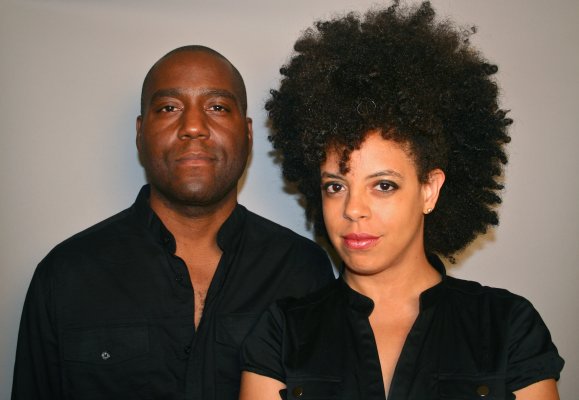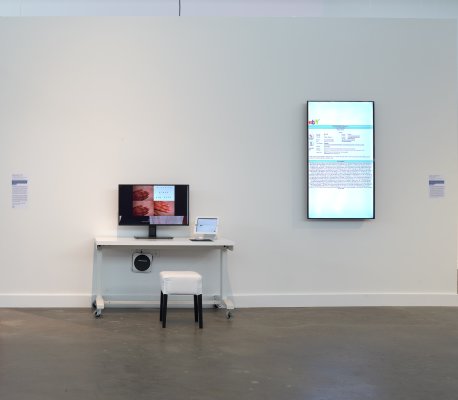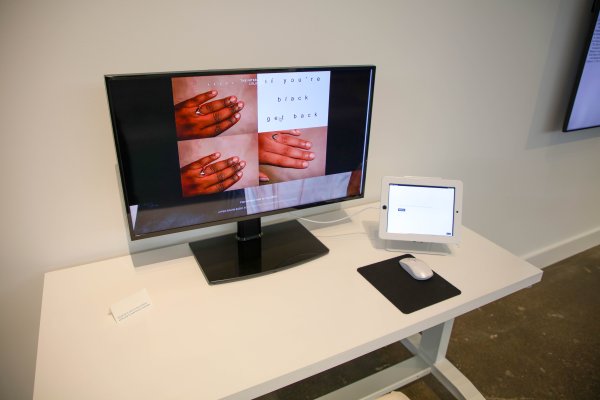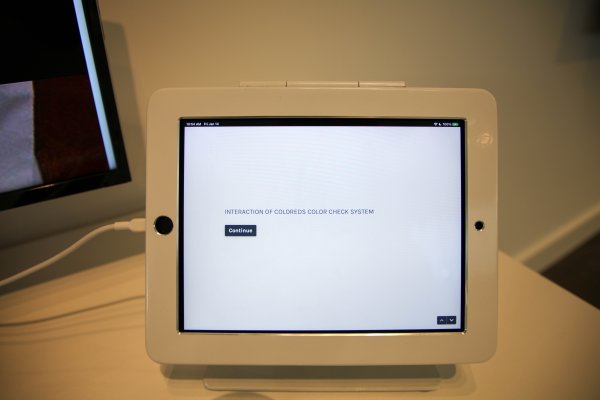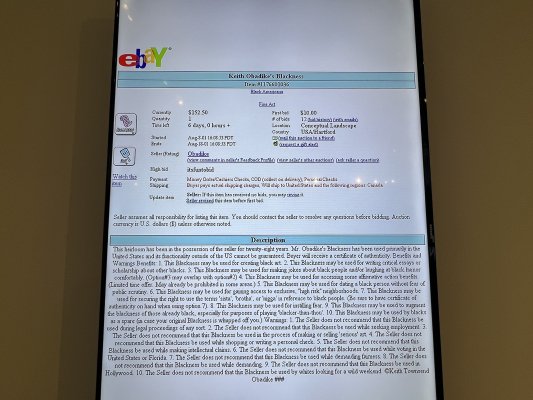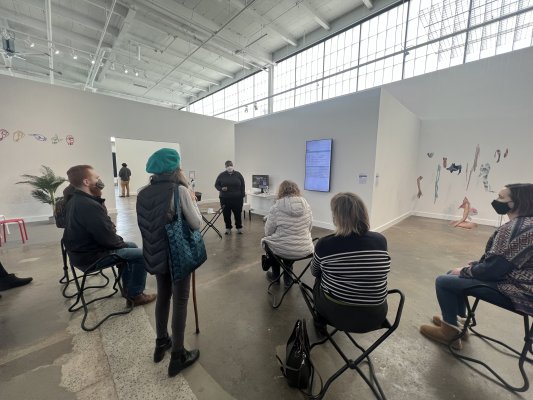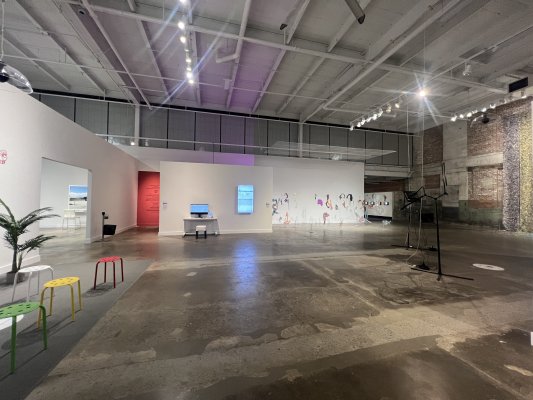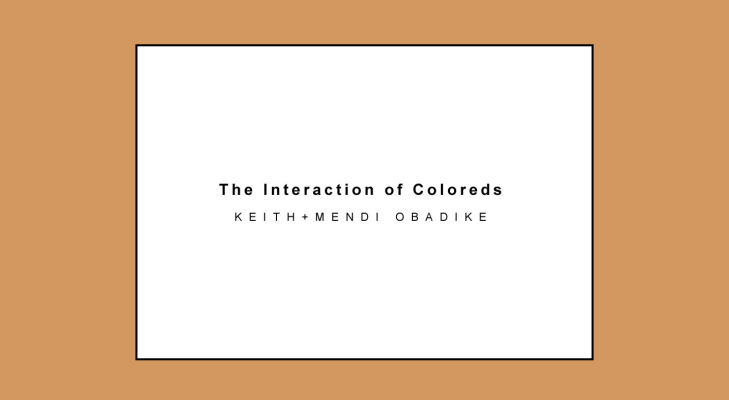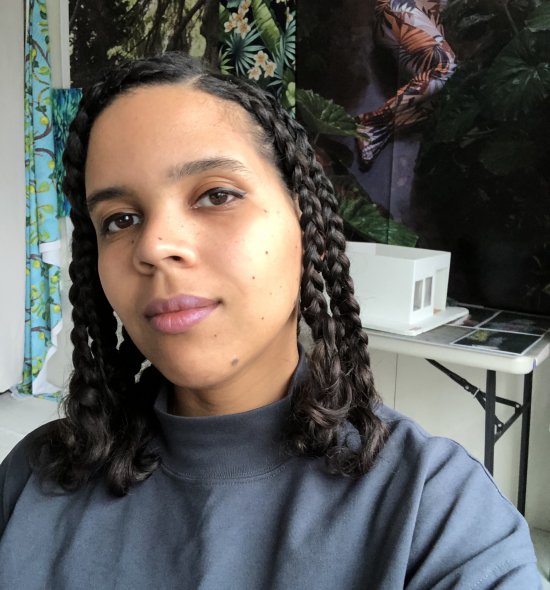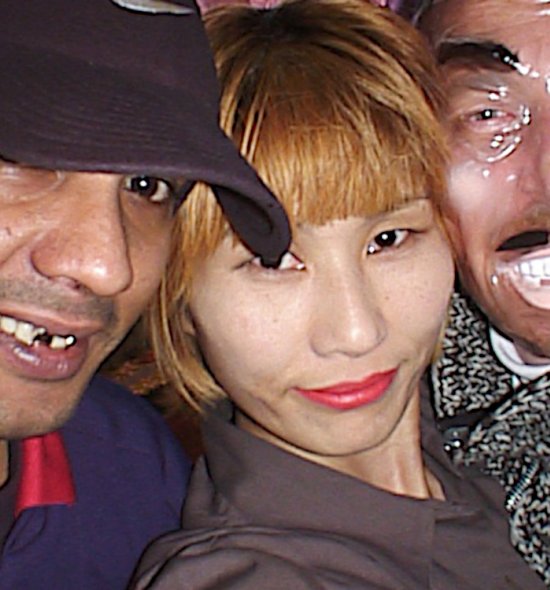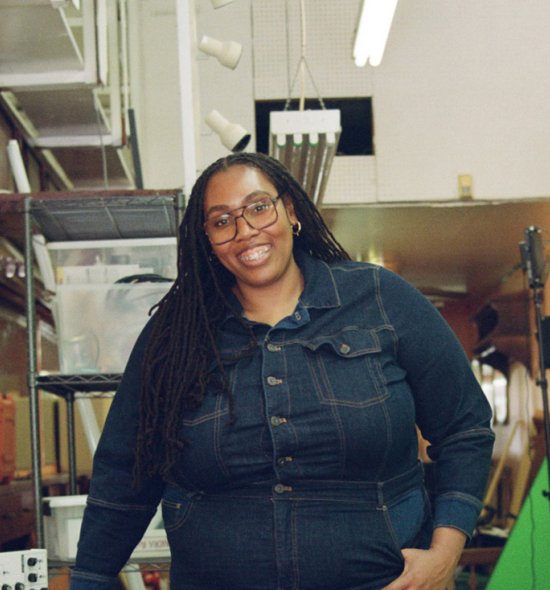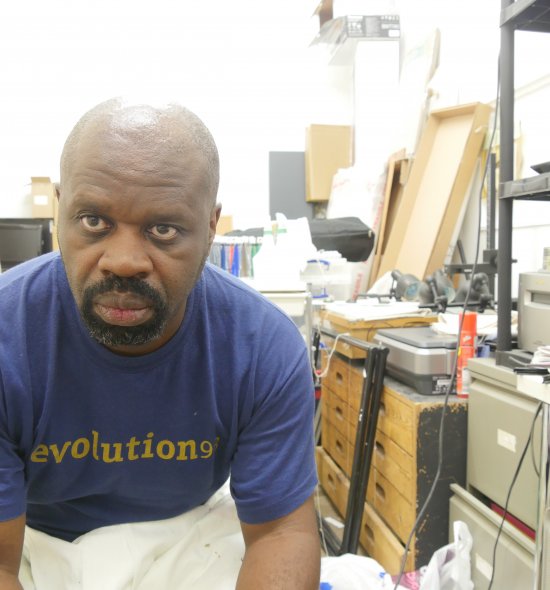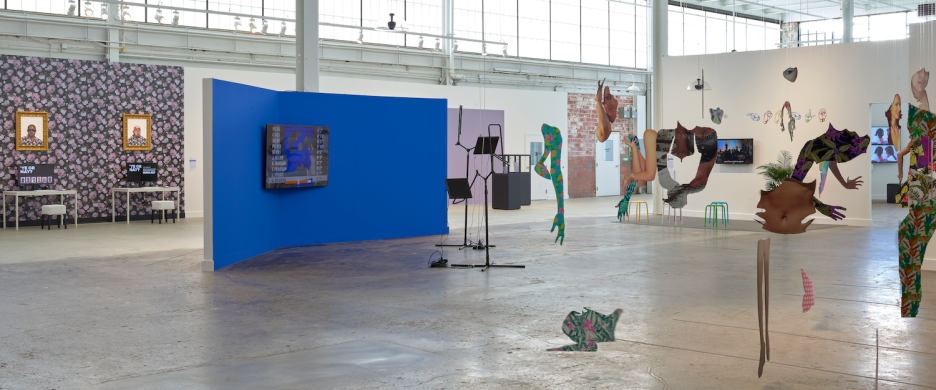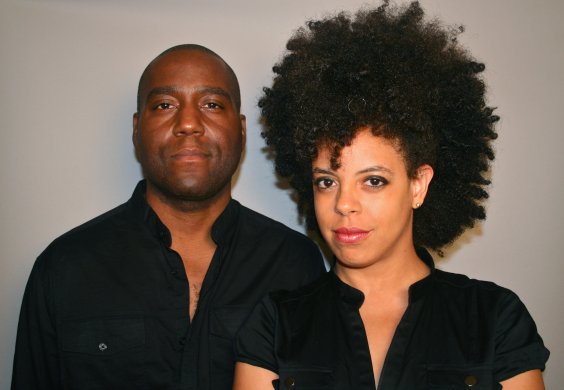Blackness for Sale, 2001
Screenshot of archived website displayed on monitor
Courtesy of the artists
"We were thinking about the conversation around whether the internet is a space where we are free of identity and free of the oppressive forces that deal with categorizing people. Although a lot of that conversation was happening around the internet and around art, we felt like the place to address it would be in the art.”
—Mendi Obadike
In August 2001, the artists Mendi + Keith Obadike (she/her/hers and he/him/his, respectively) listed Keith’s “Blackness” for sale under the “Black Americana” section on eBay. The listing had no photo but a lengthy list of “benefits” and “warnings,” such as, “This Blackness may be used for gaining access to exclusive, ‘high risk’ neighborhoods” and “The Seller does not recommend that this Blackness be used during legal proceedings of any sort.” By satirically pretending that Keith’s race could be separated from his body, the work challenges the idea that the internet allows us to escape our identities, as many early internet users hoped, and suggests that the internet is more likely to commodify our identities instead. The use of eBay’s auction feature underscores that Blackness has long been violently commodified, going back to the earliest slave auctions. Despite regularly allowing sales of racist figurines and other problematic “Americana,” eBay cancelled the listing after four days, ironically demonstrating how the internet can further the exclusion of marginalized communities.
